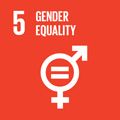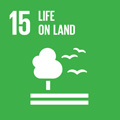- Docente: Paolo Savoia
- Credits: 6
- SSD: M-STO/05
- Language: Italian
- Teaching Mode: Traditional lectures
- Campus: Bologna
- Corso: Second cycle degree programme (LM) in Philosophical Sciences (cod. 8773)
Learning outcomes
The aim of this course is to provide the students the tools for analyzing historically the social, gendered, political, and cultural contexts of science and medicine. More specific aims include: the analysis of the relationship between scientific practices and popular cultures; the analysis of the relations between science and everyday life; the interpretation of scientific knowledge in light of the social and cultural contexts of its actors; the development of bibliographical and archival research skills.
Course contents
A HISTORY OF THE BODY IN EARLY MODERN EUROPE: KNOWLEDGE, ILLNESS, AND FOOD CULTURES
This course focuses on two intertwined aspects: the history of the ideas and practices of the care of the body with respect to gender, environment, and food; and the history of the mutual relationships between "high" scientific knowledge and "low" popular knowledge.
After an introduction on the historiography of the body which will discuss several approaches – from the Annales school to feminisms –, the course will explore three topics: medicine and surgery in the context of other disciplines and the imagery of early modern Europe; knowledge on food and dietetics; relationships between humans and the environment, with a special focus on the history of epidemics.
Ultimately, this course aims at offering a pluralistic view of the the corpus of body knowledge in the early modern period, the relationships between science and popular culture, and the social and scientific continuities between the bodies of humans, plants, and animals.
The course will begin on February 1, 2021.
Monday 11-13 (aula XI, Via Zamboni 38); Thursday 17-19 (aula E, Via Zamboni 34); Friday 15-17 (aula E, Via Zamboni 34).
Readings/Bibliography
Part 1
Anthology
• Marcel Mauss, "Le tecniche del corpo" in Teoria generale della magia e altri saggi (Einaudi, 2000), pp. 385-409.
• Michail Bachtin, "L'immagine grottesca del corpo" in L'opera di Rabelais e la cultura popolare (Einaudi, 1979), pp. 332-374 e 390-404.
• Caroline Walker-Bynum, "Il cibo come controllo del sé: il digiuno delle donne era anoressia mentale?" in Sacro convivio, Sacro digiuno: il significato religioso del cibo per le donne del Medioevo (Feltrinelli, 2001), pp. 209-240 e pp. 323-328.
• Piero Camporesi, "Il tramonto della luna: il vino, la vite e la nuova scienza" in La terra e la luna: alimentazione, folclore, società (Garzanti, 2011), pp. 117-158.
• Thomas Laqueur, "Nuova scienza, una sola carne" in L'identità sessuale dai Greci a Freud (Laterza, 1992), pp. 83-148 + + Gianna Pomata, Donne e rivoluzione Scientifica: verso un nuovo bilancio, in Nadia Maria Filippini, Anna Scattigno, Tiziana Plebani, a cura di, Corpi e storia (Roma: Viella, 2011), pp. 165-191.
• Alfred W. Crosby, "Conquistador y pestilencia" e "L'origine della sifilide" in Lo scambio colombiano: conseguenze biologiche e culturali del 1492 (Einaudi, 1972), pp. 27-51 e pp. 104-133.
Part 2
Paolo Savoia, Cosmesi e chirurgia: bellezza, dolore e medicina nell'Italia moderna (Bibliografica, 2017), pp. 228.
Part 3
One book from the following list:
Katharine Park, Secrets of Women: Gender, generation, and the origins of human dissection (New York: Zone Books, 2007)
Maria Conforti, Andrea Carlino, Antonio Clericuzio, ed., Interpretare e curare: malattia e salute nel Rinascimento (Roma: Carocci, 2013) [selezione di saggi]
Gianna Pomata, La promessa di guarigione: malati e curatori in antico regime (Roma-Bari: Laterza, 1994)
Giulia Calvi, Storie di un anno di peste: comportamenti sociali e immaginario nella Firenze barocca (Milano: Bompiani, 1984)
Alessandro Pastore, Le regole dei corpi: medicina e disciplina nell'Italia moderna (Bologna: Il Mulino, 2006)
William Eamon, La scienza e i segreti della natura: i libri di segreti nella cultura medievale e moderna (Genova: ECIG, 1999)
Samuel K. Cohn, Cultures of Plague: Medical thinking at the end of the Renaissance (Oxford: Oxford University Press, 2010)
Sandra Cavallo, Tessa Storey, Healthy Living in Late Renaissance Italy (Oxford: Oxford University Press, 2013)
Madeleine Ferrières, Storia delle paure alimentari (Roma: Editori Riuniti, 2004)
Rebecca Earle, The Body of the Conquistador: Food, Race, and the Colonial Experience in Spanish America, 1492-1700 (Cambridge: Cambridge University Press, 2012)
Piero Camporesi, La carne impassibile : salvezza e salute fra Medioevo e Controriforma, Garzanti, 1994.
Valentin Groebner, Storia dell'identità personale e della sua certificazione. Scheda segnaletica, documento d'identità e controllo nell'Europa moderna, Casagrande, 2008.
Students non-attending lectures should read:
Mirko D. Grmek, a cura di, Storia del pensiero medico occidentale, vol. 2 (Roma.Bari: Laterza, 1996), capp. I, II, VI, VIII.
Teaching methods
Lectures.
Texts and primary sources that will be discussed in class will be added to the bibliography for those interested in them. If the circumstances will allow it (mainly the number of participants), during the final meetings of the course, students will have the chance to make a short presentation on one specific topic or one book from the list of part 3 (which will be part of the final evaluation), to be approved by the teacher.
Assessment methods
Oral exam on parts 1 and 2.
For part 3, students will have the choice of making a presentation in class or to write a review no longer than 2000 words, on one of the books on the syllabus.
Top marks (28-30) will be given to students who demonstrate a thorough knowledge of the material discussed in class and contained in the texts, critical and analytical skills, and the ability to express ideas and concepts clearly and cogently. Those students who will demonstrate a good knowledge of the material but tend to repeat it mechanically rather than demonstrate full understanding and the ability to build connections and present an argument will be rewarded with average to high marks (23-27). Students who demonstrate superficial knowledge, gaps in preparation, poor critical and analytical skills and difficulties of expression will receive average to low marks (18-22). Severe lacunae in one or more areas listed above could lead to the student repeating the exam.
Office hours
See the website of Paolo Savoia
SDGs


This teaching activity contributes to the achievement of the Sustainable Development Goals of the UN 2030 Agenda.
